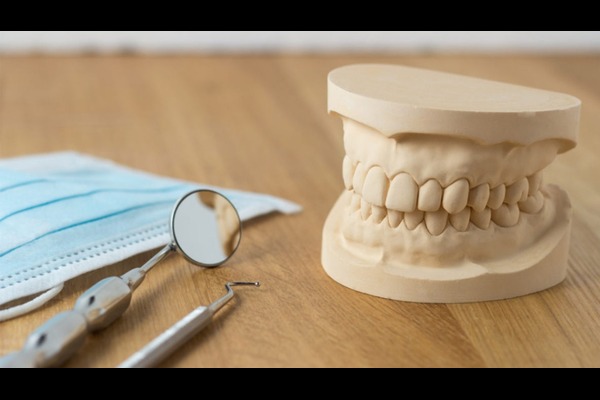
Introducing types of dental plaster and how to use them correctly
Introducing the types of dental plaster and how to use them correctly. Three common types of dental plaster are Velmix plaster, acetone plaster and white plaster. In fact, stone plaster and Volmix plaster are considered stone plaster. These names are the common names of plasters in the market, but their scientific names are different from the common names.

Volmix plaster: Volmix plaster is used for molding molds related to fixed works such as composite bridges and artificial teeth.
Acetone plaster: Acetone dental plaster is used to remove molds on the front jaw. For example, the dentist worked on the teeth of the lower jaw. He also cut and molded the teeth, but also sent you a mold of the upper jaw to bring the relationship between the upper and lower teeth closer to the lab. Acetone plaster is used to mold the upper jaw. White plaster: This plaster is used for casting primary molds for normal and mobile works. White plaster: acts as an articulator for both fixed and anchor pads. Even for casting the foundation, it is better not to use white plaster. It connects the maxillary and mandibular teeth to the labrum.
Features of high quality dental plaster:
Suitable and high-quality dental plaster has the following properties:
The baking time of the dental plaster should be enough that the casting can be done easily and not longer than usual. Plaster should have small volume changes during placement so as not to change the shape of the jaw or teeth too much and maintain the actual size. It has enough hardness to withstand pressure and friction in various activities. It has low porosity. Polymerization of synthetic materials should not affect the cast plaster.
Variability of the dimensions of dental plaster or expansion:
The parameters of dental plaster may change after mixing with water, but these changes are not permanent. Different plasters have different parameters. Some of them change their parameters more than others when mixed with water. White plaster: White plaster is a piece of plaster that is larger than its original shape after mixing with water. This plaster has many dimensional changes compared to the size of the plasters. Stone dryer: This dryer has few changes after drying. Again, the change in measurements is not small. Rock cement is more flexible than Volmix cement. High-density plaster: High-density plaster has less dimensional change than other plasters. For this reason, this plaster is used for fixed works such as cladding.
Types of dental plaster colors:
The color of plaster is different, but their color does not affect the use of plaster. Plasters of the same type, but different colors, do not differ from each other.
For example, gypsum can be blue, yellow, pink, etc. Volmix plaster has different colors and the type and application of plaster and its correct use are important.

Methods and methods of mixing dental plaster with water:
Mixing dental plaster with water requires tools such as a container or bowl, a mixer, and a syringe. In addition, a measure is considered for each plaster and the amount of water is chosen according to the weight of the plaster and the measure so that it becomes a paste after mixing. Once the plaster has turned into a paste, the molding process is complete. In order to understand that the obtained paste is suitable, it is necessary to know that the mixture of water and plaster of Paris must have a good and uniform paste state to fill and form all the cavities under the mouth and teeth.
Three suggested methods for mixing plaster and water:
The method of mixing with a certain amount of water: This method is based on your experience, for example, based on your previous experience, you have come to the conclusion that you need two or four cc of water for Velmix plaster by measurement. Here is your personal guide. You can use a syringe to accurately measure the amount of water.
Manufacturer’s instructions: On each package of plaster there is a recipe that you can use for mixing. در این دستورالعمل میزان آب و گچ مشخص شده است.
روش دیگر روشی است که در آن حجم آب مشخص نیست، اما اندازه گیری آن مشخص است. مثلا یک لیوان گچ کنارش می ریزید و روی گچ داخل کاسه به اندازه کافی آب می پاشید تا به قوام خمیری که می خواهید برسد.(معرفی انواع گچ دندانسازی و نحوه صحیح استفاده از آن ها)

